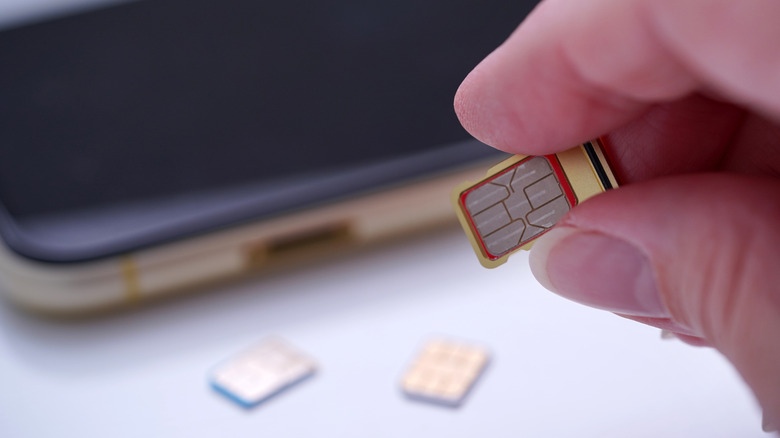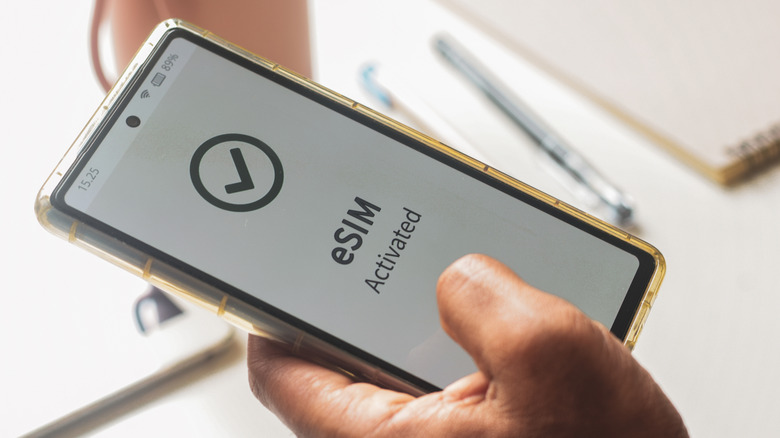What Does 'SIM Card' Actually Mean?
As smartphones have become more pervasive in our lives, we've all kind of been forced to pick up basic knowledge and terminology over the years. Where previously certain jargon would exclusively be used by industry insiders, now you'll see customer-facing documentation that seemingly expects you to know what they're talking about. A good example of this is the rising ubiquity of the term "SIM card," which refers to the "Subscriber Identity Module" found within your smartphone.
The SIM card is a crucial component in just about every personal connection device from smartphones to tablets, as it is a virtual key with which your mobile carrier can verify your identity and get you hooked up to the services that you need. SIM cards have existed in mobile devices since the 90s, and have taken on an assortment of sizes and data capacities as smartphones have evolved.
SIM stands for Subscriber Identity Module
The first commercial SIM card was released in 1991 by German company Giesecke+Devrient, known today as simply G+D. In line with its full name, "Subscriber Identity Module," the original purpose of a SIM card was to authenticate a mobile phone owned by a subscriber to a particular mobile network. The first of which was a network provider in Finland.
SIM cards still serve this basic purpose, even after global adoption by just about every major mobile carrier. The SIM card in your phone is what allows it to perform vital functions, such as making calls or sending texts. The SIM card stores your phone number and details about your mobile plan. When you place a call, the SIM pings your mobile carrier to let them know, which in turn allows the carrier to check your data rates and update your bill, as well as impose fees if necessary. Without a SIM, you can't reach any mobile providers, and your phone can't place calls.
Modern SIM cards also store information from your general phone usage, including contacts and saved text messages. If you ever purchase a new phone, you can transfer the SIM card from your old device into the new one and import the old device's vital information, as well as keep your phone number. Before doing so, you should use the SIM card to check if your phone is carrier-locked, which makes the process a bit more complicated.
Newer phones may have Dual SIMs or eSIMs
The very first SIM card released in the 90s only had 32kb of onboard storage. That's enough space to save 20 contact names and numbers, and around 5 text messages. Newer SIM cards can have as much as 256kb of storage, which can be nice for those who are concerned about information that should not be kept in cloud storage.
In fact, there have been multiple developments in the field of SIM cards in recent years. For instance, some phones possess Dual SIM setups, allowing you to load up two SIM cards simultaneously and swap between them. This setup lets you maintain two distinct phone numbers and contact lists, which can be convenient for those who need separate work phones or are just trying to keep their devices a little more private.
Another type of SIM is the embedded SIM, or "eSIM" for short. Traditional SIM cards are physical storage devices you can pop out of a small tray in your phone. An eSIM, on the other hand, is integrated directly into your phone's circuitry, and cannot be removed. eSIMS are remotely activated by your mobile carrier, and if you buy a new phone, your data can be transferred to the new device's eSIM instead of having to manually insert a SIM card. It's a practice Apple has supported since 2018 with its iPhones, in line with Steve Jobs' distaste for physical SIM cards. It's also helpful for recovering your personal data in the event your phone is stolen.


